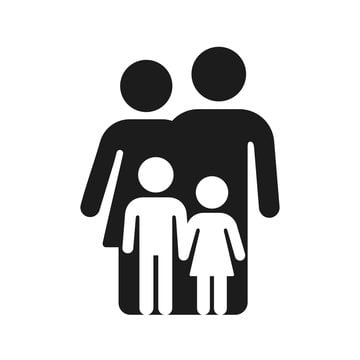Bridging the Generational Gap: Strategies for Effective Multigenerational Communication in the Workplace
Today's workplaces are vibrant mosaics of diverse generations, each contributing unique experiences, communication styles, and perspectives. This blend fuels innovation and problem-solving, yet presents distinct communication challenges. This article outlines fifteen key strategies to foster seamless communication and cultivate a harmonious, productive multigenerational work environment.
Cultivating Empathy and Open-mindedness: Understanding that each generation's communication style is shaped by its historical context and cultural influences is paramount. Approaching interactions with empathy and a willingness to understand diverse viewpoints is crucial for bridging generational divides. Active listening and genuine interest in colleagues' perspectives build robust working relationships and foster effective collaboration. This creates a foundation of mutual respect and understanding, essential for navigating differences in communication styles.
Mindful Communication Strategies: Recognizing that language constantly evolves, generational differences in vocabulary and communication preferences can easily lead to misunderstandings. Avoiding jargon or slang that might alienate colleagues is crucial. Prioritize clear, concise communication, adapting your style to your audience. While younger employees might embrace instant messaging, older colleagues may prefer email or face-to-face interactions. Flexibility and adaptability are vital for effective communication across generations.
Strategic Technology Integration: Technology significantly impacts modern communication. While younger generations are often more tech-savvy, inclusivity demands providing training and support for colleagues less comfortable with digital tools. Striking a balance between leveraging technology's efficiency and ensuring everyone feels included is essential. This may involve offering personalized training, providing alternative communication options, and fostering a supportive learning environment.
Mentorship Programs: Fostering Reciprocal Learning: Establishing cross-generational mentorship programs facilitates the transfer of knowledge and wisdom between experienced and newer employees. This reciprocal learning strengthens communication, builds relationships, and fosters a culture of continuous improvement. Mentorship provides a structured framework for sharing insights, building rapport, and bridging generational divides through shared experiences.
Building a Culture of Respect and Inclusivity: A workplace valuing every voice, regardless of age, is essential. Promoting intergenerational collaboration and actively reinforcing the importance of respecting diverse perspectives creates a psychologically safe space where open communication flourishes. This inclusive environment encourages participation, allowing every individual to contribute their unique talents and perspectives.
Clarity, Transparency, and Open Dialogue: Clearly defined expectations, goals, and deadlines minimize misunderstandings and ensure everyone works towards shared objectives. Regular check-ins and open dialogue enhance communication clarity, facilitating prompt problem-solving and fostering a shared understanding of team goals and individual roles.
Encouraging Feedback and Open Communication: Creating opportunities for open and honest feedback allows employees to share concerns, ideas, and suggestions, leading to improved processes and stronger team cohesion. Regular feedback sessions foster continuous learning and improvement, ensuring that communication strategies are consistently refined and improved.
Challenging Biases and Stereotypes: Actively challenging preconceived notions and stereotypes about different generations is crucial for creating a fair and equitable work environment. Focusing on individual abilities and contributions rather than relying on age-based generalizations promotes inclusivity and recognizes the unique value each individual brings to the team.
Team Building and Socialization: Breaking Down Barriers: Organizing team-building activities that encourage interaction and collaboration across generations provides informal communication opportunities and relationship-building, helping to break down barriers and foster a sense of camaraderie. These activities can help colleagues get to know each other on a personal level, promoting understanding and trust.
Investing in Targeted Training and Development: Investing in ongoing training that addresses the specific communication needs of different generations ensures employees have the skills to effectively navigate multigenerational dynamics. This targeted approach ensures that training programs are relevant and effective in equipping employees with the necessary communication skills.
Leadership's Role in Modeling Effective Communication: Leaders and managers set the tone for effective communication. They must actively model respectful communication, active listening, and constructive feedback, creating a positive and inclusive work culture. Leadership commitment to inclusive communication practices is crucial for shaping a positive workplace culture.
Continuous Improvement through Feedback and Adaptation: Encouraging regular feedback sessions where employees share their experiences, challenges, and suggestions for improvement fosters a culture of continuous learning and adaptation. This proactive approach ensures the workplace evolves to meet the communication needs of all generations.
Celebrating Diversity and Harnessing Collective Strengths: Focusing on the unique strengths and perspectives each generation brings to the table embraces diversity as a source of innovation and creativity, maximizing productivity and achieving collective success. Recognizing and leveraging these unique strengths empowers individuals and strengthens the entire team.
Conclusion: Effective communication in a multigenerational workplace isn't just about accommodating differences; it's about strategically leveraging the collective strengths of each generation to build a thriving and innovative team. By fostering understanding, empathy, and respect, organizations create a dynamic and inclusive work environment where all employees feel valued and empowered to contribute their best, leading to increased productivity and a more engaged workforce.



